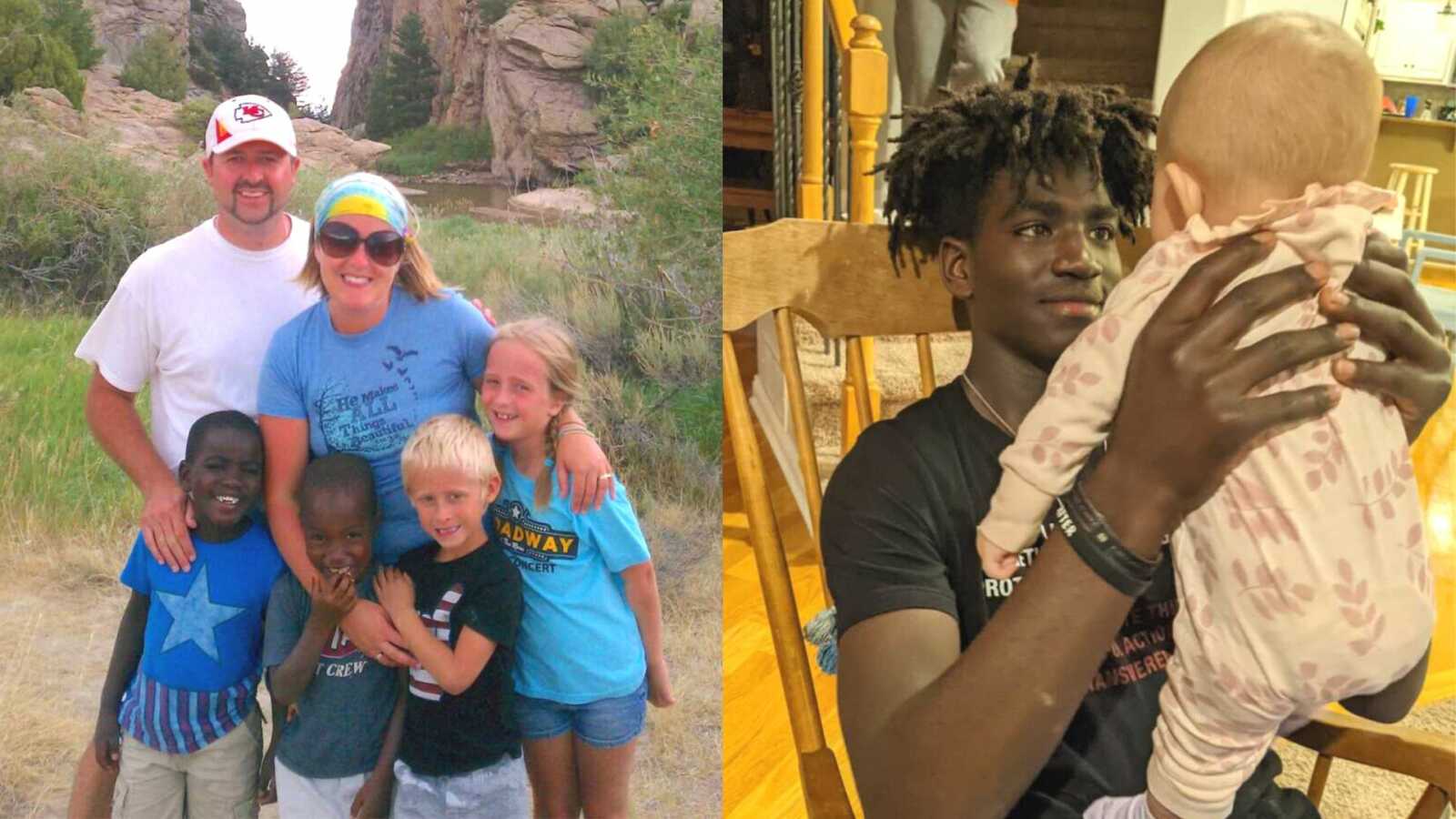Adopting Internationally
“I always imagined I would adopt children someday. As a little girl, my baby dolls were all the Crayola shades. And as a young nurse working in a large children’s hospital, I gravitated toward the kids with the complicated stories of foster care, orphanages, or kinship placements.
When my husband and I discussed our future dreams, we both agreed DNA doesn’t make a family, kids need homes, and we were capable of loving a child who wasn’t genetically connected to us. After almost dying of eclampsia with my first daughter, then having a critically ill newborn with my second, growing our family further through adoption was more than just an idea… it was a clear path forward.
Although it was unprompted, we weren’t surprised when an inquiry packet for an adoption agency arrived in the mail one day. Taking it as a ‘sign,’ Ryan and I eagerly completed our first home study, with candles burning, freshly baked cookies on the counter, and a reference list a mile long. We attended the classes. Did the fundraisers. All the while, our hearts were growing in love for children we hadn’t yet seen or met.
I can remember telling a friend we wanted to do international adoption because I didn’t want to ‘share’ my children with their birth family; that was my primary reason for taking the international route. At the time, we also honestly believed kids in orphanages didn’t have living family members to care for them. But I didn’t know what I didn’t know.
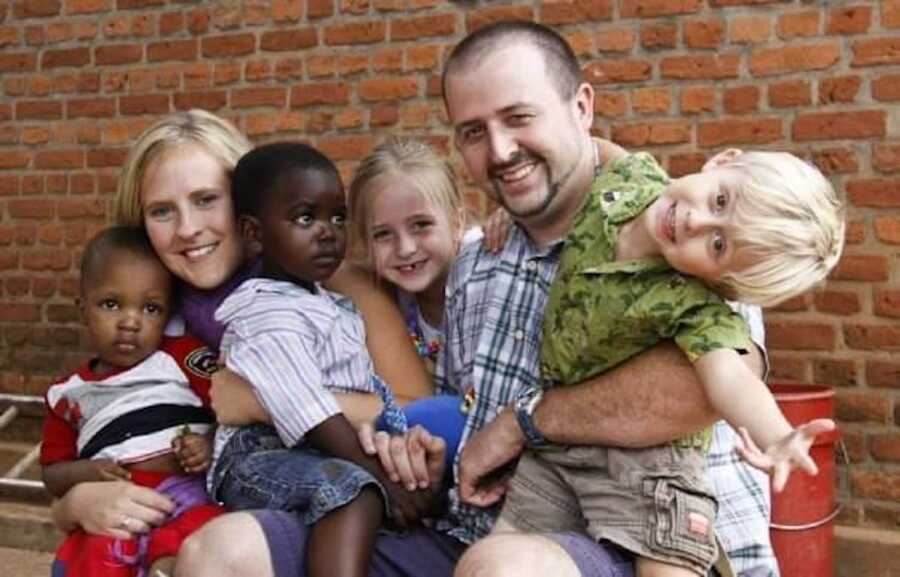
At the time, there weren’t social media posts to shine a light on the loss each adopted child experiences. No one was tweeting about trauma in children from hard places. My idea of adoption was centered around, honestly, an image of a happy couple rescuing their children from the horrors of an orphanage. So when we were matched with our two sons from Rwanda, I really believed my love was all they needed.
The day we met our two sons behind a bright blue gate of an orphanage at the bottom of a dusty red road in Rwanda was the day my life and my purpose shifted. Their blank eyes as my husband and I held them and cried and smiled happy smiles at the cameras should have caught my attention, but my rose colored glasses were just too thick.
After a few weeks of fighting the bureaucracy of embassies and lawyers and international laws, we wearily and joyfully exited the plane to a crowd of welcome signs, eager embraces, warm casseroles, and everything in between.
Understanding Adoption Grief & Trauma
Those first years with our sons are a blur. Calling a friend to lament, I said, ‘I thought we would all fall in love.’ Her response still echoes in my mind. ‘Kara, don’t you remember? All two-year-olds are hard. Boys are difficult. It’s no big deal.’
Our ignorance was as wide as the ocean between our boys’ first home and their forever home. Trauma behaviors are hard, and kids who have chronic neglect, abuse, and loss don’t know what love or trust or felt safety look like. My sons didn’t know how to be loved and we didn’t know how to parent beyond the traditional model, built on foundations of safety and trust.
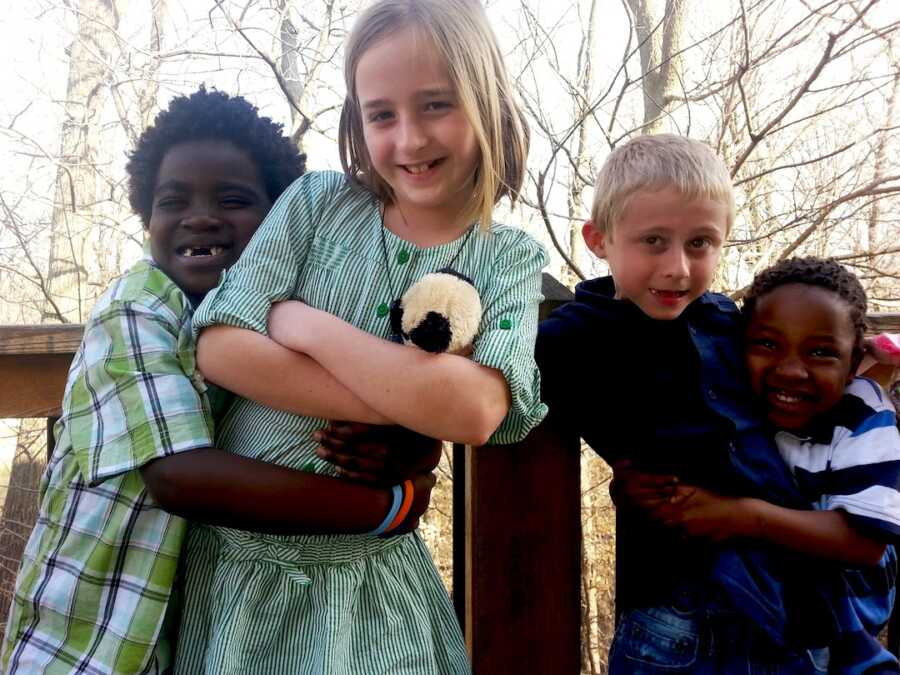
The naughty kid in your child’s class? That was ours. The mom who always looked like she’d just walked out of a fight club? Me, all day. The boys had lost their first mom and I was the next closest thing. I was the safe person to take out their fears, their anger, their exhaustion at — constantly trying to hold it all together.
Their beginning years — time without a consistent caregiver; without someone to kiss their ouchies, wipe their tears, feed and diaper them, and show up when they cried — that impacted them in ways most of the world is still far from understanding. And so we began to understand that as much as this was about helping our boys learn we were theirs forever, it was also about us meeting them where they were.
We learned as a family; taking all the classes, reframing our expectations, understanding grief and trauma, and aligning with other families navigating atypical parenting. Therapy, rehabilitation, and all the resources saved us. After a decade of hard work, it felt like the scaffolding of healing and trust had finally built a firm foundation for our sons.
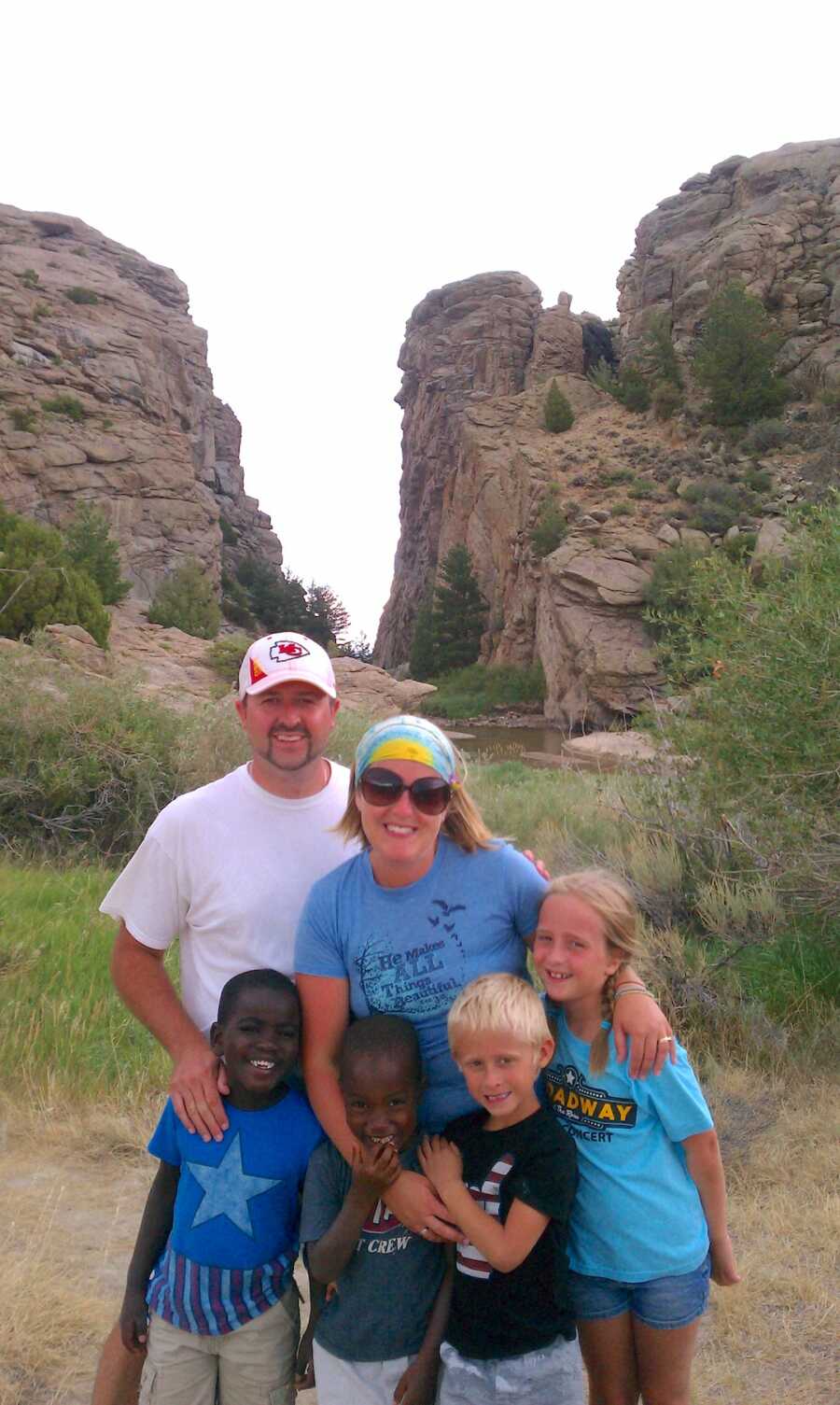
Embracing Foster Care
We began welcoming teens from hard places, making room and knowing our home was equipped for the kids who hurt most. It wasn’t unusual to have extra kids around. Our home became a soft landing for teens who may not have had anywhere to go. Our first children, our biological son and daughter, gained empathy and insight beyond anything their peers would ever possess. We all began to see difficult people as hurt people. And we were no longer weary or overwhelmed by them.
Then Covid-19 hit. As the rest of the world shut down, Ryan suggested we needed to open our home up to more. After years of teaching in a public school, he felt strongly there weren’t enough foster families in our community, that our home was capable of helping and healing some of the hard behaviors that can accompany hurt kids.
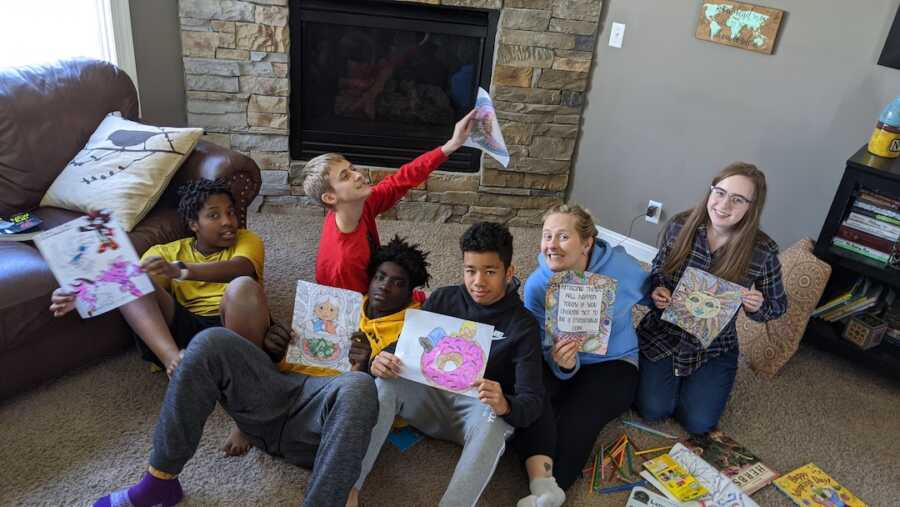
We had also become passionate about creating spaces for healing, and working on the issues that lead to children losing their first families. Officially fostering seemed like a good fit. In our state, the expectation is that foster families come alongside a child’s birth family; serving as a resource to them as much as a caregiver to the child.
Our first placement was a 6-month-old little girl. Our case worker called at 4 p.m. on a Friday, saying, ‘Are you able to take a baby? Great, I will be there in 20.’ A few moments later, with enough time for me to send an SOS text to round up some diapers, formula, and a couple of outfits, she pulled up with our Birdie. Unbuckling the sleeping baby, she quickly jotted down a couple of names and phone numbers on a sticky note, then said something about being in touch after the weekend.
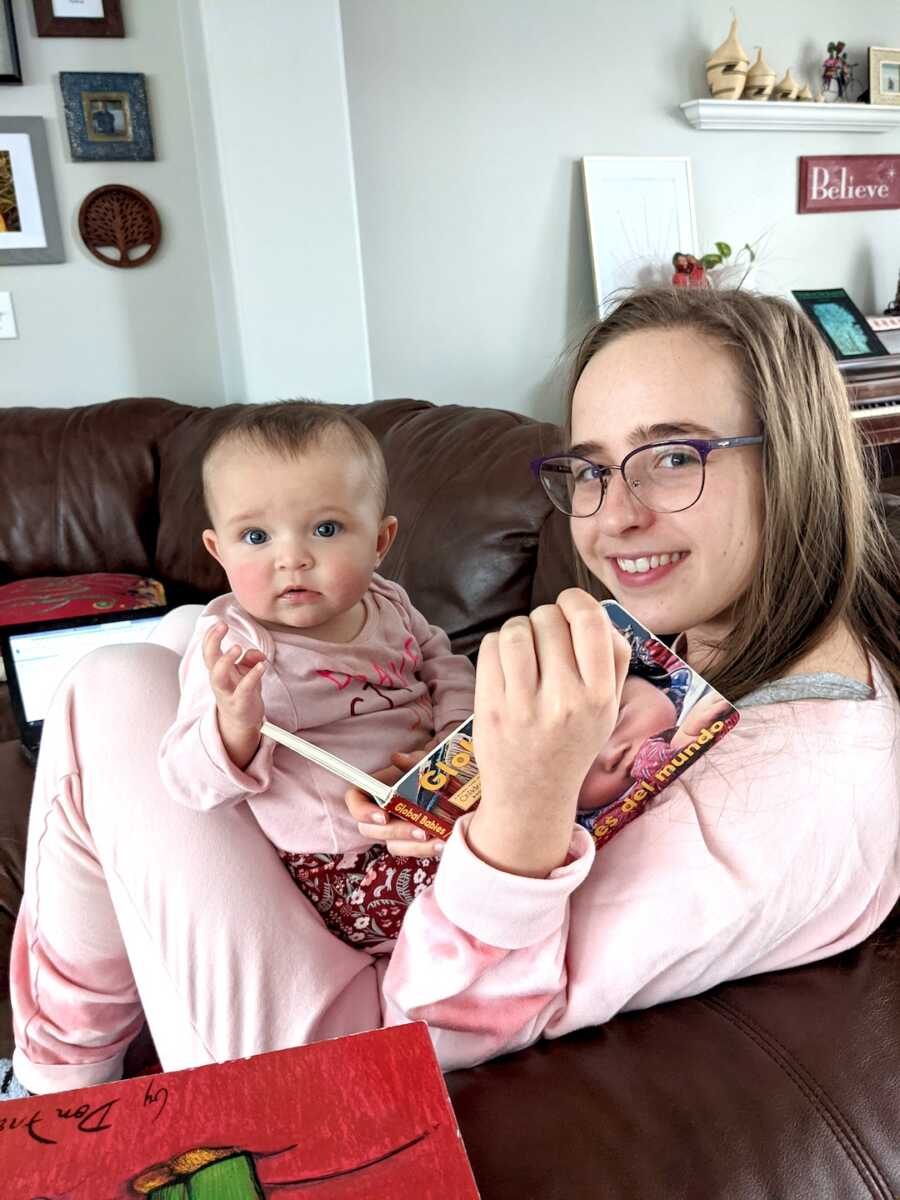
This baby was not up for adoption. The goal from day one was for reunification. Our job was to help mom become a mom. To provide text updates, pictures, and examples of how a baby’s schedule, routines, and daily cares should look. To invite her to join me for well baby checks, nutrition evaluations, PT and OT appointments.
As amazing as that sounds on paper, the reality is that a broken family doesn’t usually just shatter. A broken family has fractures. Hairline cracks that spread. Breaks that eventually run into one another until it’s too much and the whole thing breaks.
The skills a parent needs to nurture, provide, and raise up a child to thrive in their world around them… it’s not there. Or it’s there, but it’s damaged in ways that only make the work of loving and caring for tiny humans unstable and unsafe. The hope is that with the right resources, teaching, and support, children can safely return to their first family.
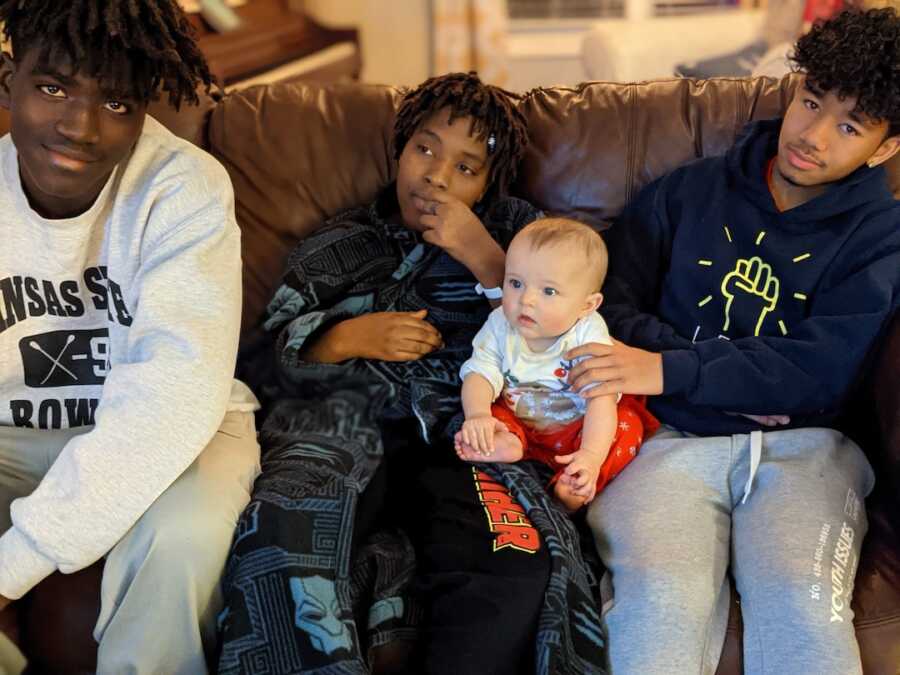
As much as we tried to do our part so that our Baby Bird could return to her first family, it wasn’t working. Birdie would take some steps toward healthy behaviors, and then she would have a visit and we would be back to square one. Eating, sleeping, and soothing were all almost impossible for her. Biological family options were extremely limited, and as weeks turned into months and months into a year, it became obvious Birdie was already forever home with us.

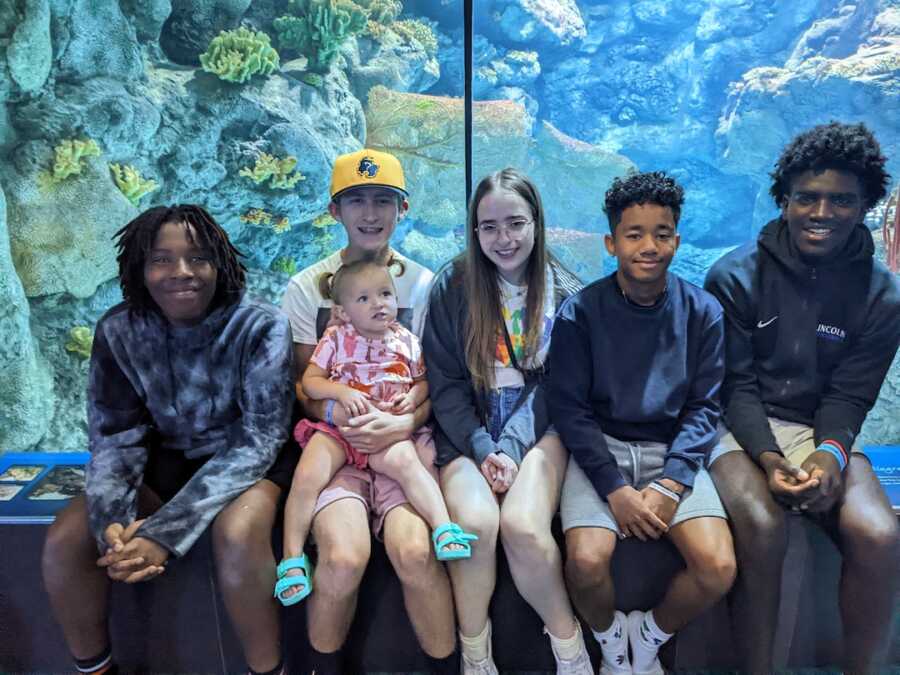
Continued Healing
I grieved for her first mom. It felt like a failure that we could not empower this woman to be able to experience the joy raising Birdie was. I grieved that the world had failed this woman too. She was once a hurt kid without the adults around her to ensure she didn’t fall through the cracks, that she didn’t become a statistic, that the cycle could end with her.
But something else amazing was happening in our home as we all worked to help Birdie feel safe, learn to trust, and learn to be loved. My sweet sons, the ones who never totally melted into my hugs, who weren’t able to be real with me about their fears and worries and joys, the ones still unsure if they would have enough to eat, who lived in a state of hyper-vigilance for the world around them, those boys began to exhale.
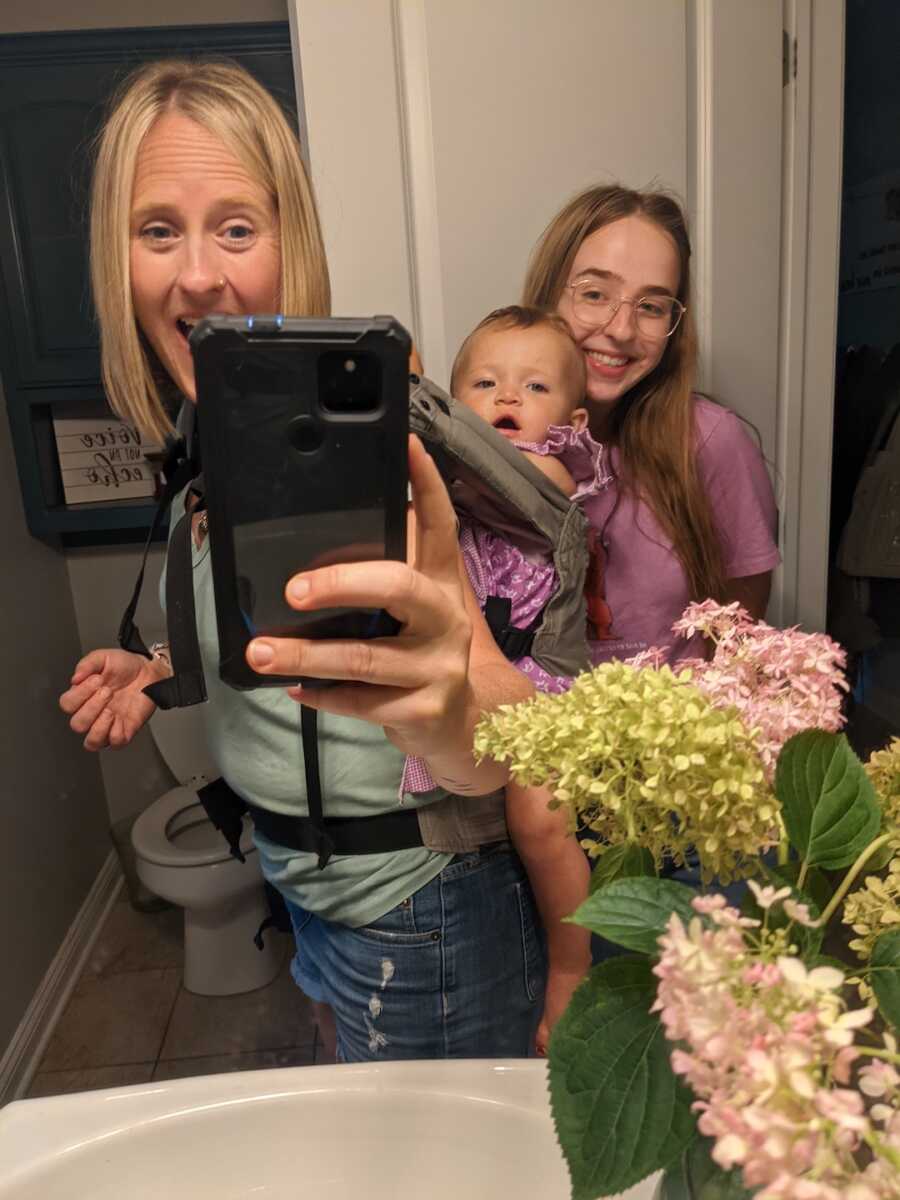
As they learned to make bottles, find the right burping technique, learn about diaper rashes, and get the best giggles out of their Baby Bird, they also came full circle, finally, back to me.
One early spring day, when Birdie was about 20 months old, she became inconsolable. We had just survived another week of supervised, but stressful visits. I knew she wasn’t hungry and she had already napped. She wanted me to hold her, but as I did, she did her best to push herself away from me.
After an hour of me trying to hold Birdie in this awkward position, while watching the rain fall, swaying back and forth, my son brought me a cup of hot tea. He said, ‘Mom, I know how she feels. She wants you but she doesn’t. Just be still and let her feel this.’ After a few moments next to us, he gently took her out of my arms, wrapped them both in a blanket, and walked out in the rain.
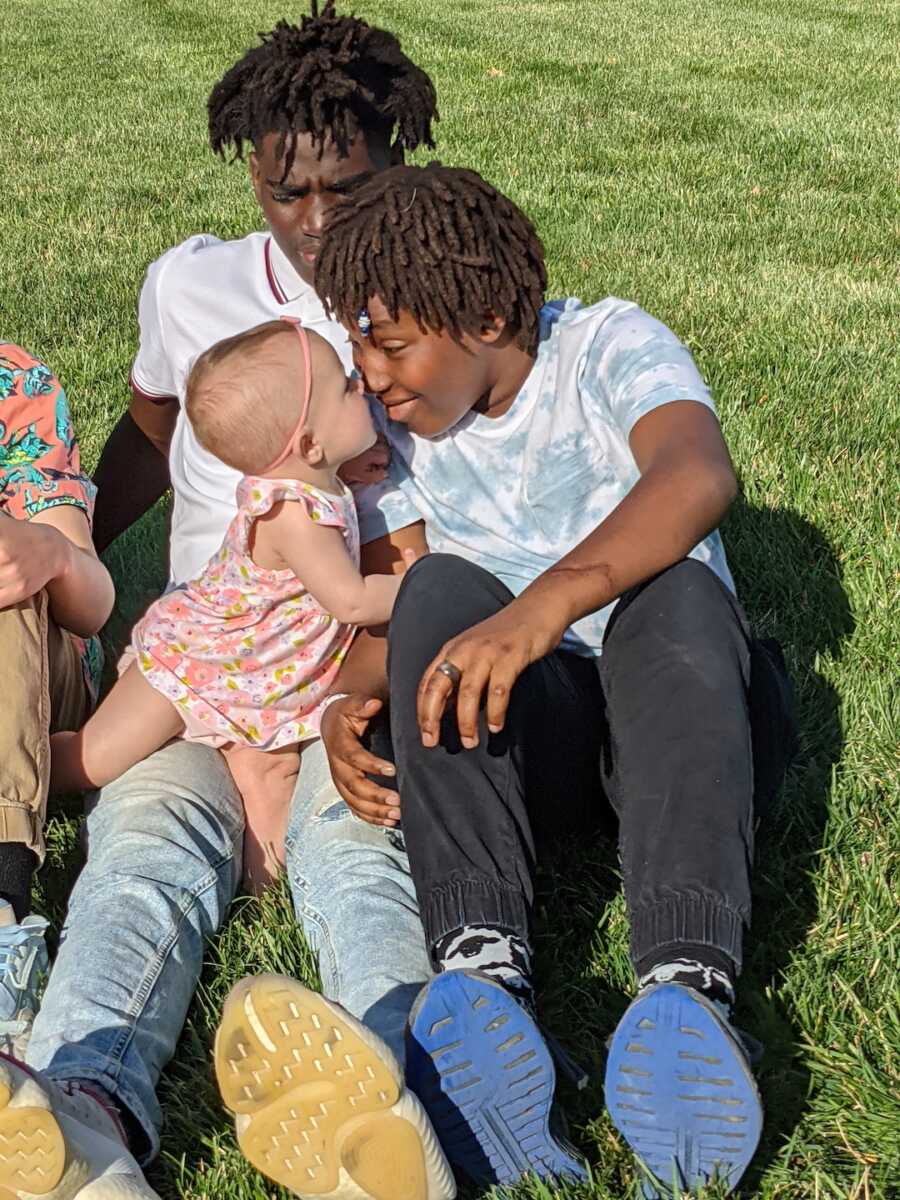
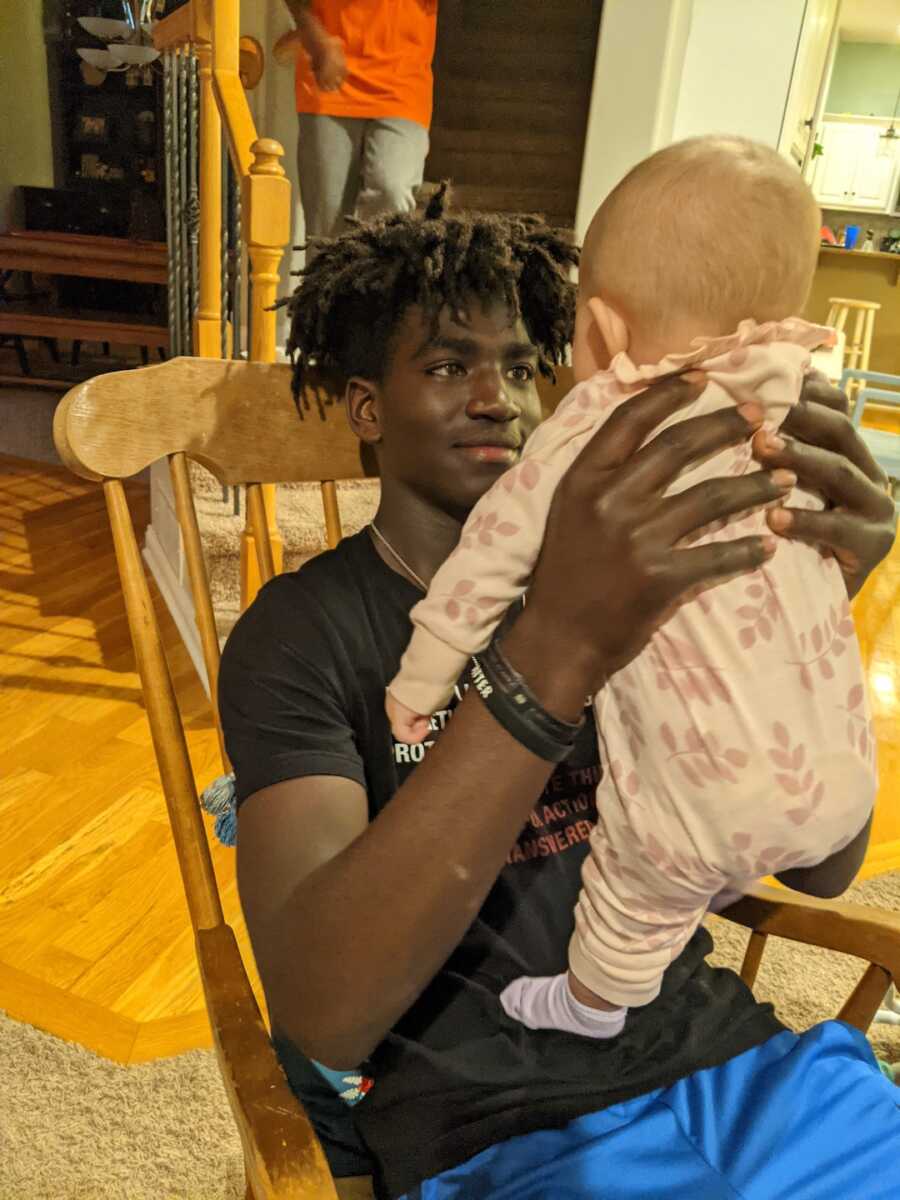
I stood watching them walk together, her leaning on her brother and grieving a loss she knew in her soul, but couldn’t yet understand. I watched as my son, who I fought to love for what felt like a lifetime, created a safe space for someone else, like I had tried to do so many times for him.
That same day, my other amazing Rwandan son asked me if I thought Birdie’s mom would ever be able to parent. He went on to tell me this journey of trying to teach and support her had made him think about his own birth mom in ways he’d never done. He could express gratitude at the selflessness she had to let go of him. And that it was okay to never feel totally okay about that broken bond.
Adopting Birdie
A few months later, after I had grieved for Birdie’s mom and the world that failed her, we filled the courthouse with all the familiar faces that had showed up for our Birdie. Parents from the bleachers of our sons’ ballgames, neighbors we hadn’t previously known, caseworkers, teammates, and family too, all sat beside, behind, and around us as the state declared our Baby Bird to be forever home. Of course, her sister and brothers were right by her side.
And so this is what it means to choose to parent another woman’s child. I know I will always be second. I know I walk a sacred path, having the honor of helping my child carry their grief, navigate love, and learn to hold space in between both. I don’t believe everyone should foster or adopt. I wish it wasn’t an option to grow families. I pray for a world where every baby is safe and supported and loved and cherished with their first moms. But until that day comes, I will continue to honor the juxtaposition of being the second mom to these precious kids.”
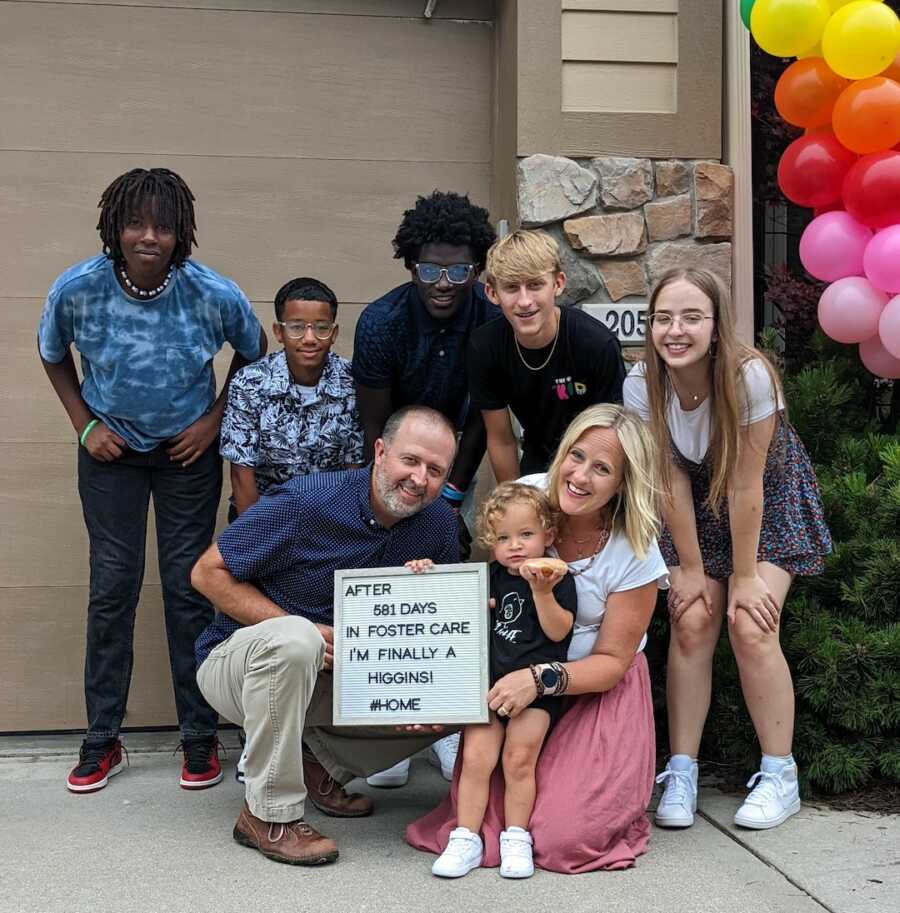
This article was submitted to Love What Matters by Kara Higgins of Council Bluffs, Iowa. You can follow her on Instagram. Join the Love What Matters family and subscribe to our newsletter.
Read more stories like this:
Do you know someone who could benefit from this story? SHARE this story on Facebook.

